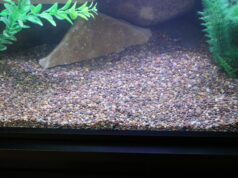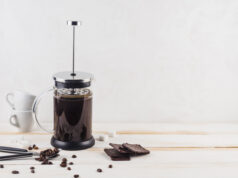
Cleaning the coffee maker is not as easy as seems. As a coffee lover myself, I know for sure that the last thing you want when you sip your first cup in the morning is a lingering taste of yesterday’s brew.
Many people don’t realize how essential it is to clean their coffee maker regularly. Residual oils and grounds can build up over time, affecting both the flavor and quality of your beverage, not to mention the lifespan of your machine.
While vinegar is often recommended as a cleaning solution, its strong smell can be off-putting, and some people may not always have it on hand. Due to that, I’ll introduce five vinegar-free methods for cleaning.
Method 1: Baking Soda and Water
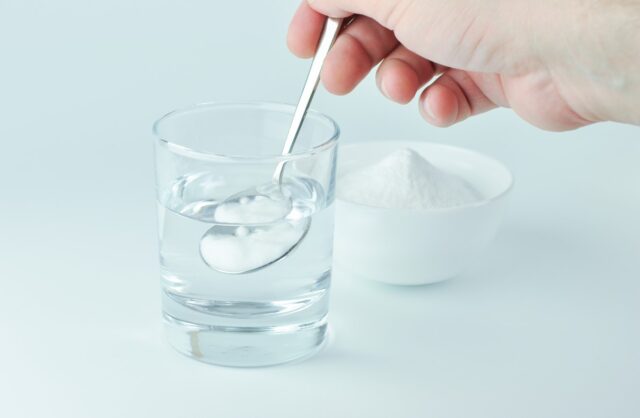
Baking soda is a popular natural cleaning agent due to its ability to neutralize odors and dissolve grease and residue. If you choose this particular method, follow these steps:
- Dissolve a quarter cup of baking soda in water to fill the coffee maker’s water reservoir.
- Initiate a brewing cycle to distribute the baking soda solution throughout the machine, breaking down any buildup.
- Thoroughly rinse the reservoir after the cycle, ensuring all traces of baking soda are eliminated. Repeat the brewing cycle a few times with plain water.
Method 2: Citric Acid Solution
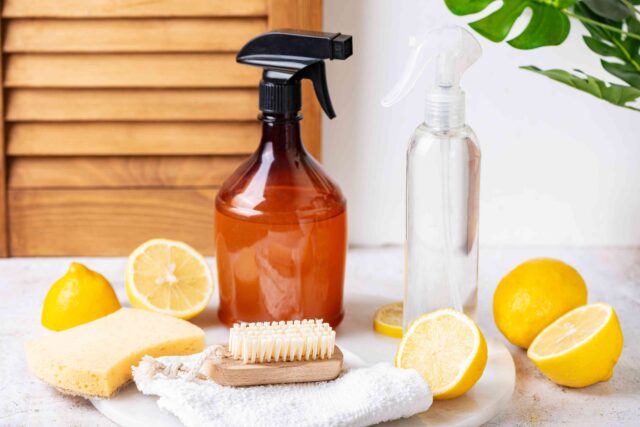
Citric acid is an excellent descaler:
- Mix two teaspoons of citric acid with water in the coffee maker’s water reservoir.
- Initiate a brewing cycle
- Flush the it by running a few brewing cycles with clean water to ensure complete removal of the citric acid solution
Method 3: Lemon Juice and Water
Lemon will not only clean your coffee maker, but it will also leave it smelling fresh.
- Fill the water reservoir with a solution of equal parts lemon juice and water.
- Begin a brewing cycle to let the lemon juice solution break down mineral deposits and oils.
- Rinse the coffee maker by running a few brewing cycles solely with water, ensuring thorough removal of all lemon juice.
Method 4: Dish Soap and Water
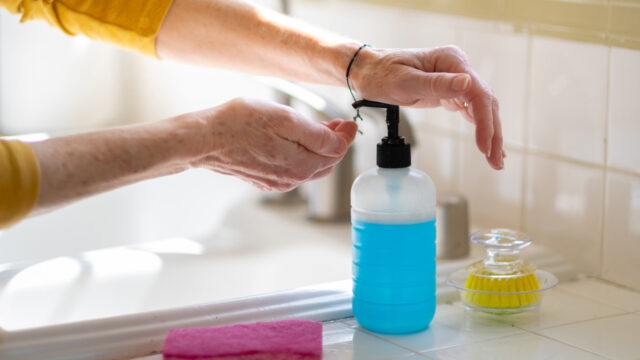
This method includes:
- Add a few drops of dish soap to warm water in the water reservoir.
- Initiate a brewing cycle
- Thoroughly rinse the coffee maker by emptying the reservoir and repeating the brewing cycle multiple times with plain water.
Method 5: Hydrogen Peroxide and Water
Hydrogen peroxide is an excellent disinfectant and can help to brighten and clean your coffee maker.
- Mix equal parts water and hydrogen peroxide, filling the reservoir with the solution.
- Start a brewing cycle to clean and disinfect the coffee maker using the hydrogen peroxide solution.
- Thoroughly rinse the machine by emptying the reservoir and running multiple brewing cycles with plain water to ensure the complete removal of hydrogen peroxide.
Safety Precautions for Alternative Cleaning Methods
While all of these methods are relatively safe, there are a few things to bear in mind.
Handling Cleaning Solutions Properly: Always rinse your coffee maker thoroughly after cleaning to ensure no residues are left. This is especially important with hydrogen peroxide, as residues can affect the taste of your coffee.
Ensuring Proper Rinsing and Drying: Allow it to dry completely before using it again to prevent any water from mixing with your coffee grounds.
Cleaning the Coffee Pot and Filter Basket
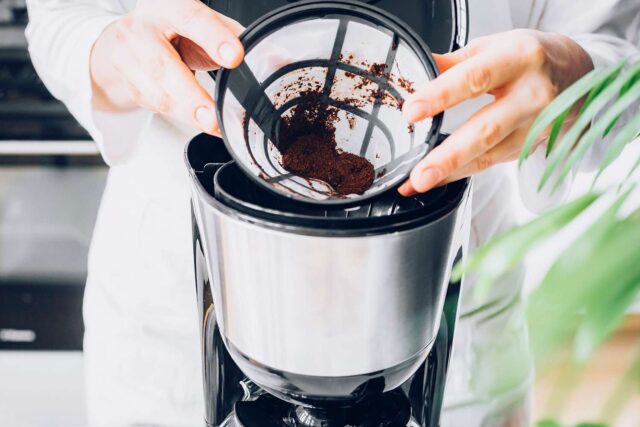
The coffee pot and filter basket can be a magnet for residue and oils from your coffee.
Remove these parts from your coffee maker and wash them in warm, soapy water. Use a soft brush or sponge to remove any stubborn stains.
For stubborn stains, soak the pot and filter basket in a solution of baking soda and water, or a citric acid solution, then rinse thoroughly.
Cleaning the Water Reservoir
Mineral deposits from your water can accumulate in the reservoir and affect your coffee maker’s performance.
Regularly empty and rinse the reservoir to help minimize the buildup of mineral deposits.
If water alone isn’t enough, try one of the cleaning solutions mentioned earlier.
Descaling
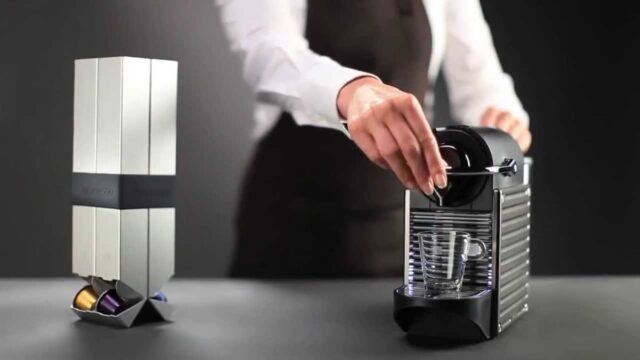
Over time, minerals in your water can deposit in your machine, creating a scale that can damage it and affect the taste of your coffee. There are many descaling products available on the market, but you can also use citric acid, as outlined earlier.
Regular Maintenance Tips
First of all, clean your coffee maker at least once a month, or more frequently if you use it often. Also, use a damp cloth to wipe down the outside of your coffee maker regularly to keep it looking clean and new.
Keeping the coffee maker dry when not in use can help prevent the growth of mold and mildew. With regular cleaning and maintenance, you can enjoy a delicious, fresh cup of coffee every time you use it.
Troubleshooting Common Issues
Improper handling or incomplete rinsing can cause clogs, leaks, or malfunctions.
If you notice your coffee maker isn’t working as it should, try descaling it. If you notice any leaks, make sure all the components are correctly placed and that there are no cracks in the machine.
If your coffee maker continues to have problems after cleaning and descaling, it may need to be serviced or replaced.
FAQs

How long does it take to clean a coffee maker using alternative methods?
The cleaning process usually takes around 15 to 30 minutes, depending on the method and the level of cleaning required.
Are there any safety precautions to consider when using alternative cleaning methods?
Yes, it’s important to handle cleaning solutions properly and ensure thorough rinsing to avoid any residue in the coffee maker.
Can I use descaling products instead of vinegar for descaling?
Yes, there are specific descaling products available that are designed to effectively remove mineral buildup without vinegar.
How often should I descale it?
Frequency depends on the hardness of your water; it is typically recommended to descale every three to six months.
Can I clean the heating element?
It is not recommended to clean the heating element directly, as it can be sensitive. Focus on cleaning the other accessible parts.
Conclusion
All in all, cleaning your coffee maker is an essential part of maintaining both its longevity and the quality of the coffee it brews. By exploring vinegar-free cleaning methods like baking soda and water, or lemon and water, you can ensure a great-tasting cup of coffee, every single time.
Now that you’re equipped with these cleaning tips, it’s time to go and enjoy your freshest brew yet!





